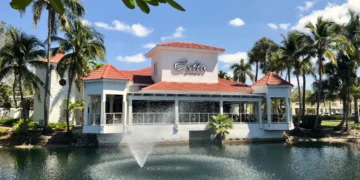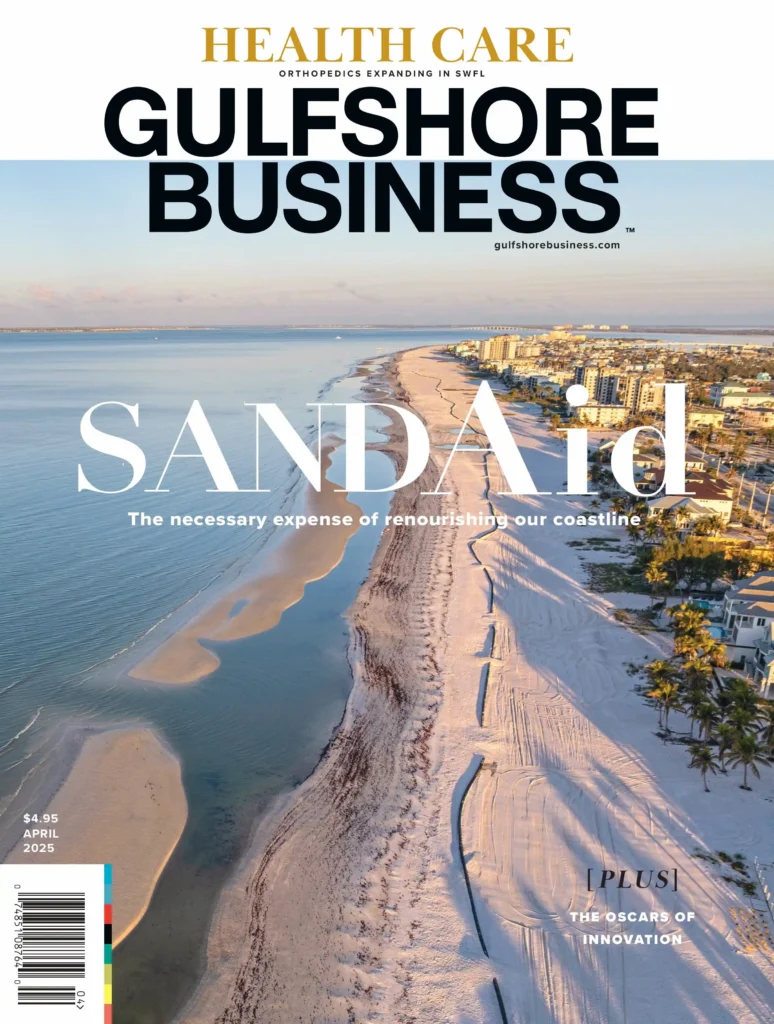A hurricane or tropical storm in open waters that seems to affect only marine life and poses no threat to land is often called a “fish storm.” Hurricane Ian, on the other hand, was a fishery storm, posing a serious threat to the livelihood of commercial fishermen along the Gulf Coast of Southwest Florida. After the storm devastated many of the coastal fisheries, docks, marinas and fish houses in the region, local fishermen worry that these damaged properties will be targeted for redevelopment and not be rebuilt.
Once fish house owners sell their properties, this will never be a working waterfront again, said Casey Streeter, whose Island Seafood Co. locations on Matlacha and Sanibel Island were seriously damaged by Ian.
“This is a dire situation. No one is going to come back and start a fish house if these ones go out because there’d be no reason to,” Streeter says. “The thing is with these properties, unfortunately, they’re more valuable not as a fishery. The property that I own is valuable—not as a fishery, but I want to keep it as a fishery. It needs to stay as a fishery.”
The leveled waterfront property would be more valuable as multimillion-dollar condominiums, hotels and other high-end developments. Streeter’s fish market in Matlacha took an incredible blow and was wiped out.
“In all reality, our infrastructure’s gone,” he says. “It’s the part that no one really thinks about, but it’s the most critical part. Because if you don’t have docks and you don’t have ice and coolers and freezers and the infrastructure for boats to pull up and execute whatever fishery they’re in—whether it’s blue crabs or stone crabs, grouper, snapper, the shrimp boats—if you don’t have that, you don’t have a fishery.”
Florida’s Gulf Coast has experienced many hurricanes, but Ian wasn’t like anything local commercial fishermen had seen before. “I don’t think any of these storms in other places have wiped out all the infrastructure as they did for us,” Streeter says. “In Lee County, we definitely lost three of the deep-water working waterfronts, and on the island, we lost three out of the four fish houses that were executing fisheries. So, we took a major hit. It’s going to be really difficult to get these fisheries back online as they were until we get that infrastructure, until we get docks in and until we get refrigeration.”
At his local shop, Streeter had to tear out everything that made it a fish house. “It’s just a shell of a building now—no ice houses, no docks, no nothing,” he says. “We’re in a hard spot right now and we definitely need some help from our governor. We definitely need some congressional federal help for our fisheries.”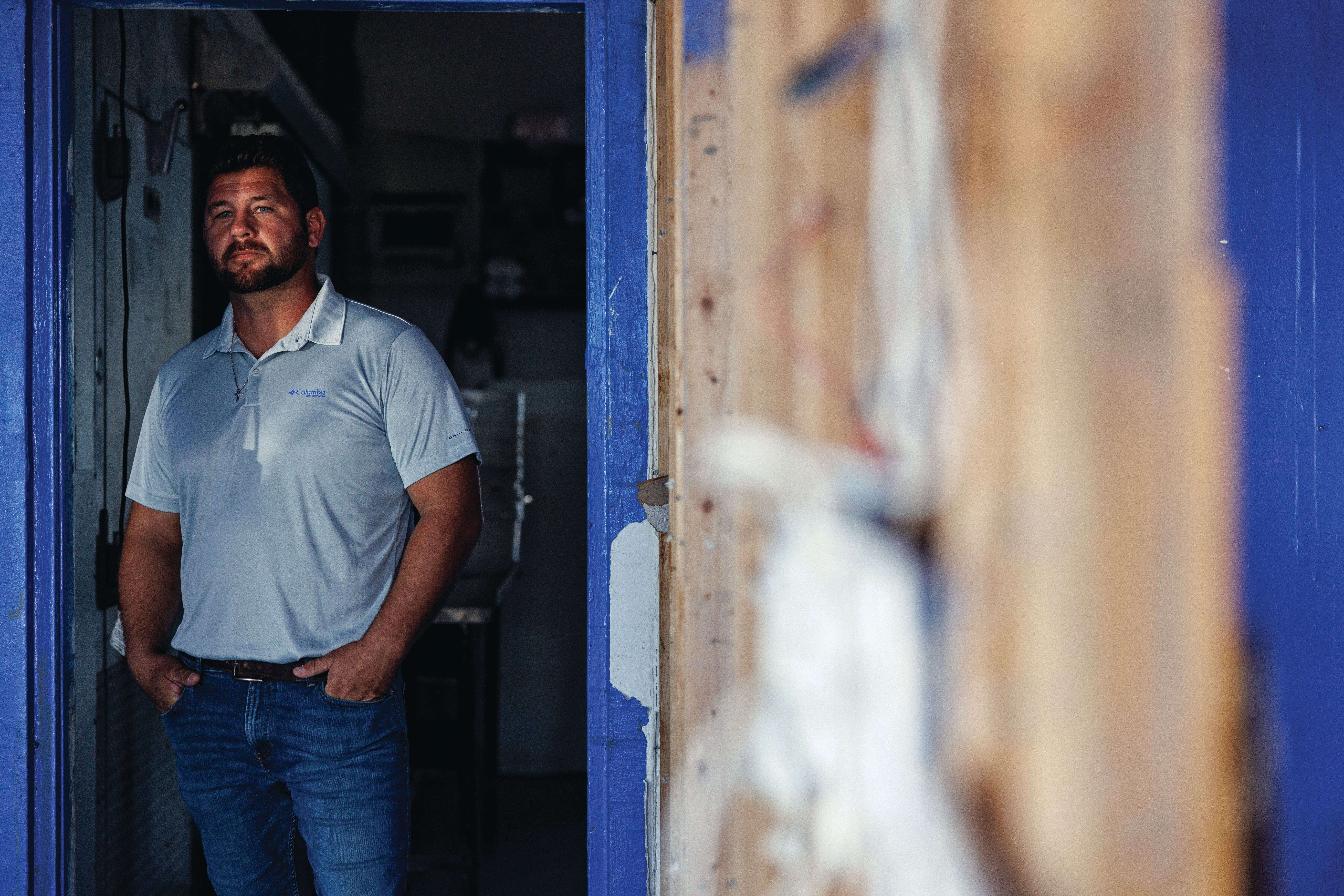
Government aid
Kirk Fish Co., based in Goodland, survived the storm and was able to open as scheduled Oct. 15, but owners of the local fish house say the state needs to help sustain the commercial fishing industry after this unnatural disaster.
“They need to help keep these important industries alive,” says Pat Kirk, who married into the Kirk family 34 years ago, joining a local seafood business her husband’s family started in Collier County in the early 1950s. Selling stone crabs, blue crabs, shrimp and fish only during stone crab season, Oct. 15 to May 1, Kirk has seen the commercial fishing industry take some serious hits over the years from Mother Nature and government restrictions.
“It is a dying industry, but we are hanging on as much as we can because it’s a huge, important industry and we don’t want people to forget that fishermen feed you,” Kirk says.
To help Southwest Florida recover from the storm’s significant impacts on the commercial and recreational fishing industry, Gov. Ron DeSantis requested in mid-October that the U.S. Secretary of Commerce issue a federal fisheries disaster. This declaration provides access to federal funding to allow offshore, nearshore and inshore fisheries to rebuild.
“Our marine fisheries have sustained huge impacts as a result of Hurricane Ian and those impacts are far-reaching,” DeSantis said. “I am committed to ensuring that Florida’s fishing industry stays afloat, and that includes supporting the Floridians who make their living on the water.”
A few weeks after the storm, the governor also waived an eligibility requirement of the Florida Small Business Emergency Bridge Loan Program to allow sole proprietors in the marine fisheries industry with businesses in Lee, Collier, Charlotte, DeSoto, Hardee and Sarasota counties to receive critical assistance. Administered by the Florida Department of Economic Opportunity, the $50 million program provides short-term, zero-interest loans to small businesses that experienced economic injury or physical damage from Hurricane Ian.
The federal fisheries disaster declaration for Florida brings in resources to try to make the devastated fisheries whole again. “But they’re federally flawed at a federal level because they take maybe two to three years to receive the money,” Streeter says. “So, anyone who’s in dire straits—like I lost all my retail options and my business—I’m not going to make it two to three years to receive the benefit I have coming to me.
“What I would like to see—our state has a $20 billion surplus—I would like to see some immediate funds come in to get our infrastructure fixed. I hate to say we’re on our last leg, but that’s a pretty close analogy of where we’re at right now.”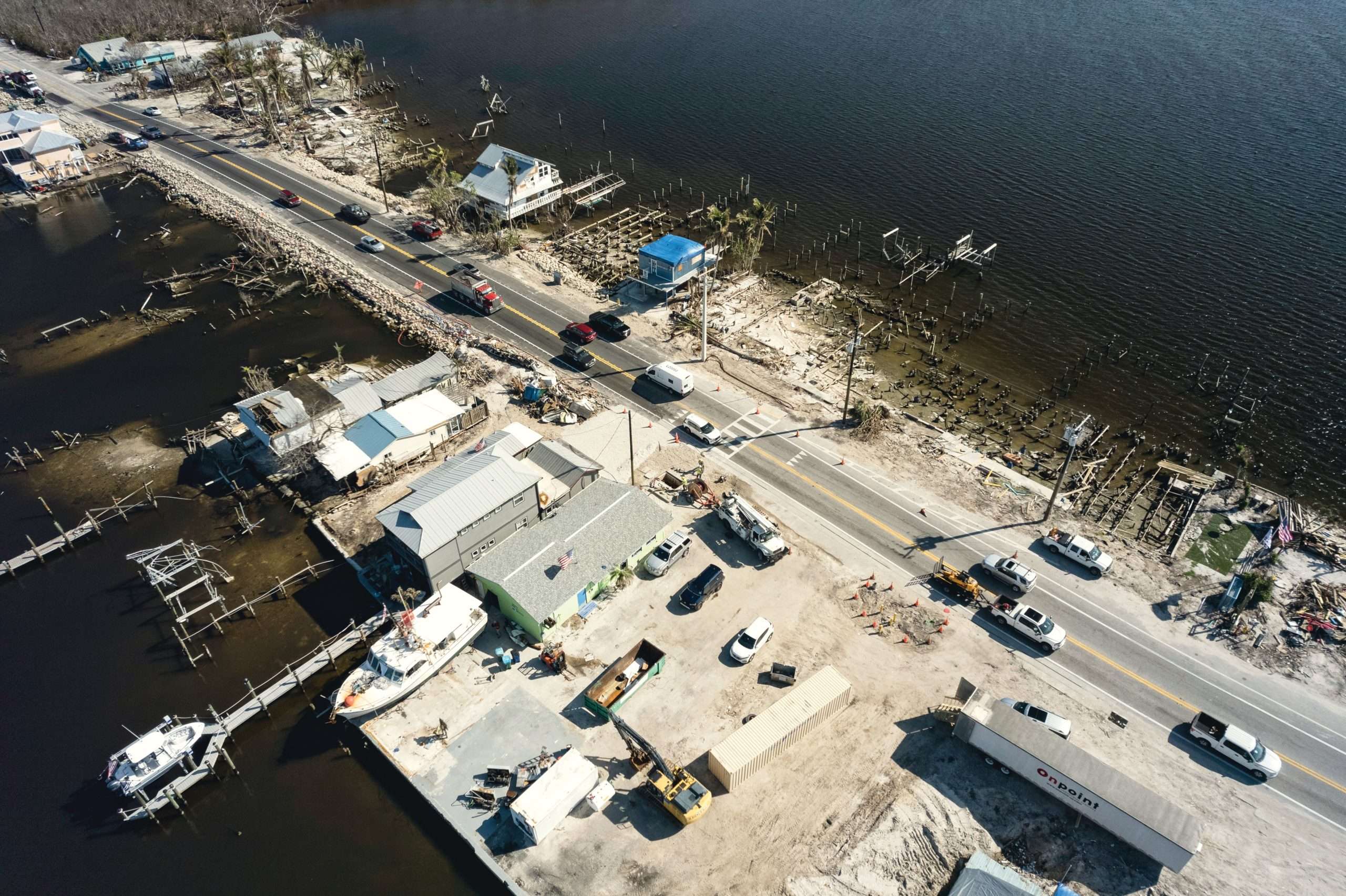
Farmers of the sea
“We’re very concerned as a country to keep our farmers around, to keep people coming into farming and all these other things, but we’ve done a very poor job as a society embracing our commercial fishermen who are out there producing food for our country and our businesses so that they can be profitable,” Streeter says. “The way I look at it is, if the state of Florida had 12 farms left, we would do everything we could to protect them. The state of Florida has 12 real deep-water working waterfronts—maybe not even that, to be honest with you.”
Florida leads the nation in the number of saltwater anglers employed as the farmers of the sea. They generate an estimated dockside value of more than $240 million in commercial food fish sales, and the state’s commercial fisheries generate $3.2 billion in income while supporting 76,700 jobs, according to the National Oceanic and Atmospheric Administration.
Hurricane Ian had a devastating effect on the local fishing industry through damaged boats and marinas, loss of refrigerated product from power outages, cancellation of charter trips and destruction of waterways and infrastructure. The disaster was a complete loss for some commercial fishermen, who lost their businesses, income and even homes, in some cases.
Streeter worries that local seafood production won’t be what it was before the storm. “I see my boats as my community’s boats because, honestly, these fisheries are theirs,” he says. “We just have the ability to go harvest it for them. We want to continue to do that, but without help we won’t be able to do that.”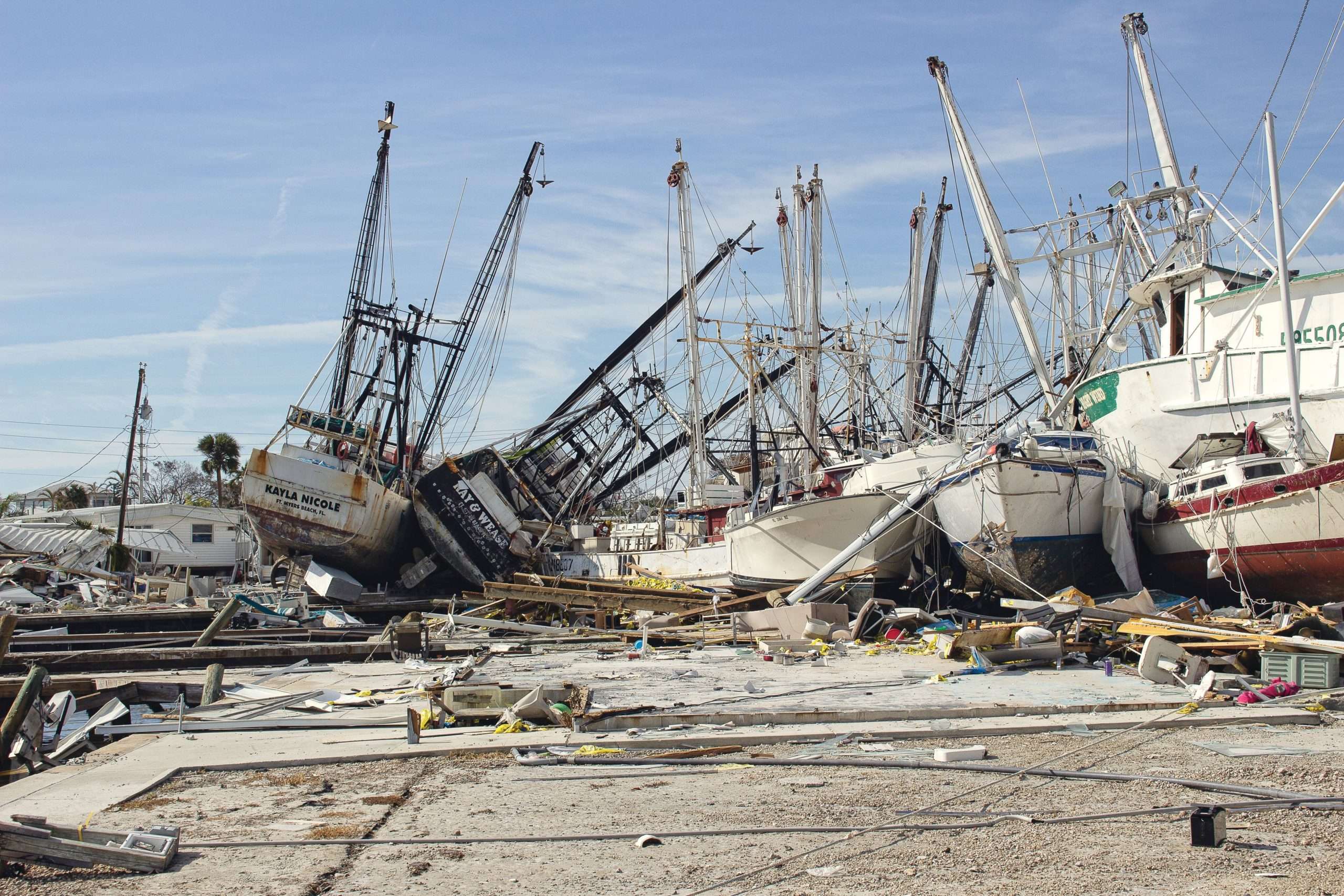
Recasting the shoreline
In light of the population boom and march of progress and redevelopment along Southwest Florida’s coast, it’s not a stretch to imagine fishery dock space being converted into residential towers with waterfront views.
“Just like everything, I’m afraid that there’s going to be the big money people coming around and saying, ‘Oh, don’t rebuild that here. Let me give you a couple of million dollars for your waterfront property.’ I’m afraid that’s going to happen if it hasn’t already happened,” says Kirk. “This is an industry worth saving. We fight tooth and nail in this industry to keep it going. It’s worth saving, for sure.”
The threat is real, Streeter said, noting that the fishing industry was challenging enough already without this additional struggle.
“So, there are obviously investment companies that are already coming out trying to work their way into these places and try to purchase them,” he says. “But as a community in Southwest Florida what you have to understand is nobody is ever going to put in a fish house again if these fish houses don’t get saved. We’re going to lose these industries.”
Grant Phelan, president of Bonita Springs-based Phelan Family Brands, which owns and operates Island Crab Co. on Pine Island and the Pinchers regional seafood restaurants, thinks the area will rebound but it just won’t be the same.
“We’ll come back and Southwest Florida will come back, but it’s going to be very different,” Phelan says, noting that many businesses on Fort Myers Beach and other areas hit hard by the hurricane cannot be built back the way they were. “They’ll have to fall under the new codes. They’ll have to fall under new FEMA regulations. Anything that was destroyed 51% or more will have to come back to today’s codes and it will be different.”
The sights and smells resulting from Hurricane Ian’s landfall are something Phelan will never forget. “I’ve been in Naples 35 years, since I was 12, and I’ve never seen something like this. Ever,” he says. “They’ve always said the storm surge was going to come but it never did. This time they were 100% right. It came and it came in a massive way. I pray we never see something like this again. I hope it’s another 35 years that I live in Naples and I don’t see anything like this again, because it’s horrific.”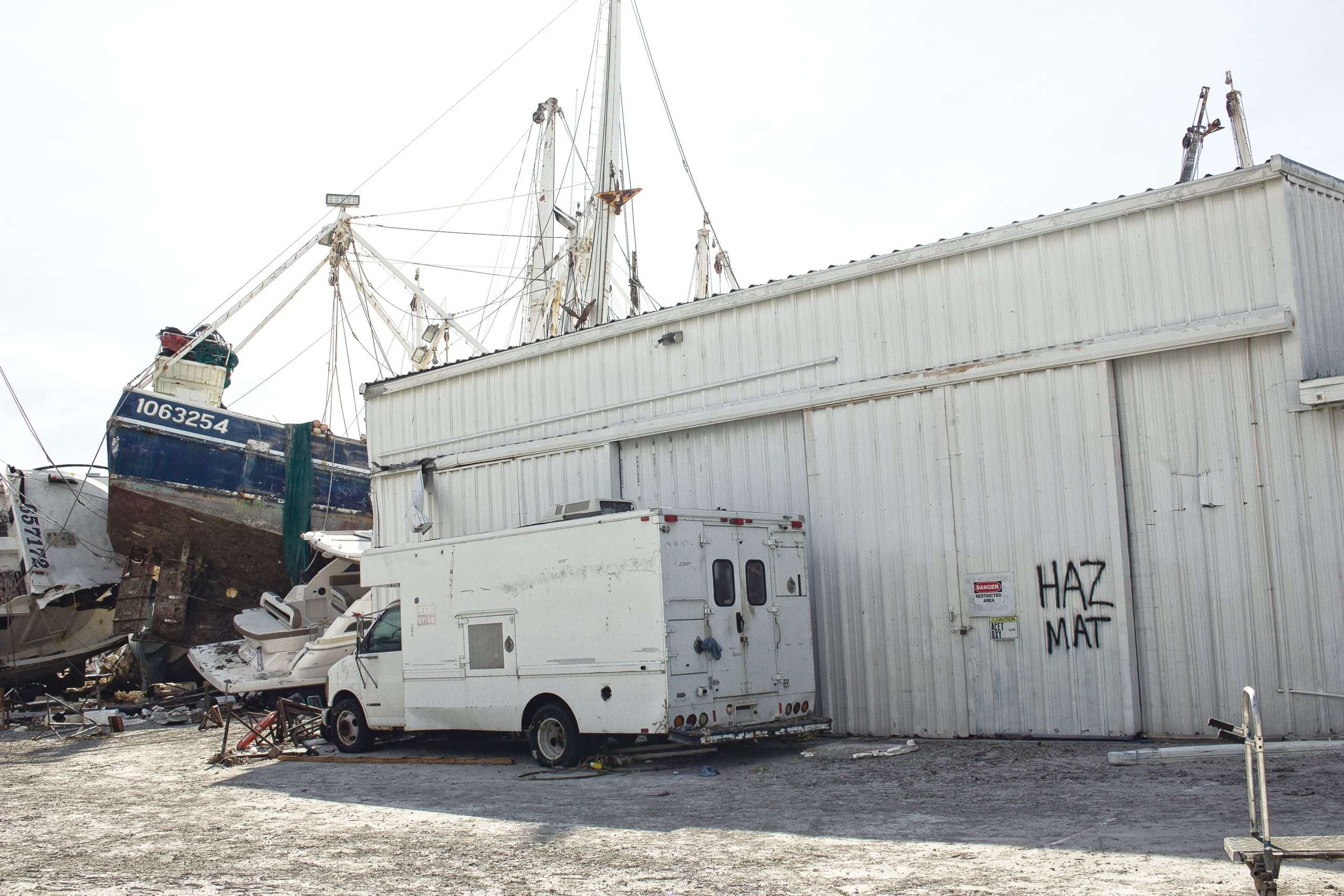
Hurricane damage batters local shrimping industry
Like everything else on Fort Myers Beach, the shrimping industry got wrecked Sept. 28 from Hurricane Ian. But unlike most everything else, the shrimping industry already was facing immense challenges—from rising fuel prices to inflation to pricing pressures from international competitors.
Before Fort Myers Beach shrimpers can tackle any of those challenges, they must get their boats back into the water. The storm grounded 43 boats, most of which landed on San Carlos Island, just across Estero Bay from Estero Island. Two months after the hurricane hit, fewer than a handful of boats had been returned to the water.
“Every boat that gets in the water is a huge economic impact to the community,” says Tracey Gore, who with her husband Henry co-owns Gore Seafood. “If it’s one, two, three boats, four boats, each one is going to be a big impact.”
The Fort Myers Beach fleet has a $50 million annual economic impact, said Gore, a former mayor of Fort Myers Beach.
“Then with that money, we buy everything locally,” she says. “Fuel, supplies, net repair, welding, groceries, lawyers, accountants, seafood markets, freezer trucks, repairmen, our homes and taxes we pay toward government projects and infrastructure, etc. We hire locally and keep the working class working. Our industry is second only to tourism, and our working waterfront commercial fishing industry is part of the character and charm that locals love and draws tourists here.”
The Gores’ boat, the Lexi Joe, named for their daughter and son, was the second to be lifted by a crane on a barge from the land back into the bay. The process took 10 days.
“She’s 120 tons,” Tracey Gore says. “So, it’s just getting the crane to be able to safely put her back in the water.”
To make matters even more challenging, the shrimpers aren’t just reeling from the lack of boats in the water. They are struggling to find places to unload them, even if they were floating. “The other thing here is we don’t have any docks,” says Chris Gala of the Trico Shrimp Company. “That’s going to be another challenge. We have to figure out some way to tie them up. Maybe anchor them here? We don’t know.”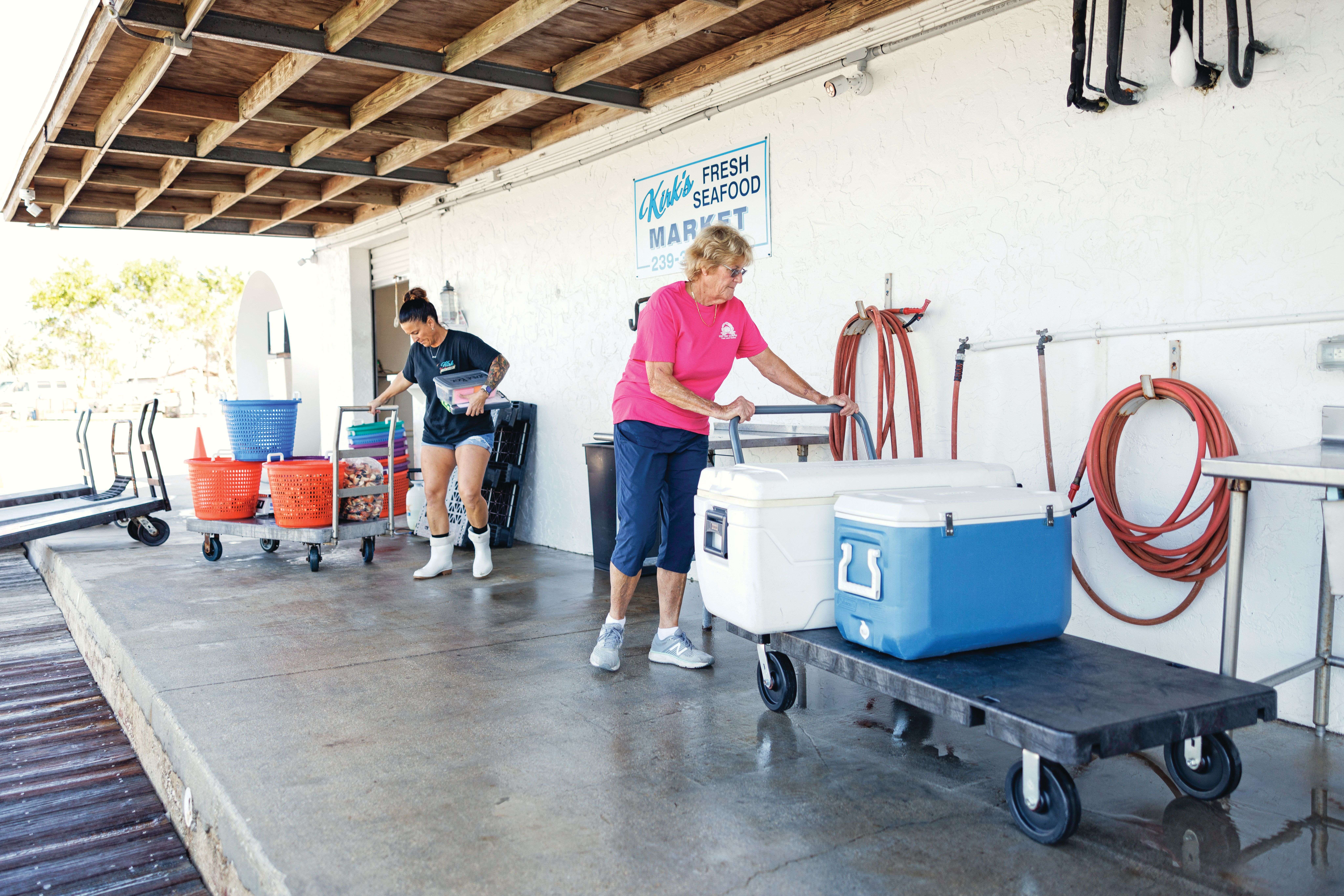
The Southern Shrimp Alliance exists as a sounding board for industry concerns and also to seek solutions. It encompasses the eight shrimp-producing states in the southeastern United States, from North Carolina along the coast south and then westward to Texas, with Florida in between.
“Florida’s shrimp season is happening now,” says Deborah Long, Alliance president. “A lot of boats from Texas have traveled to Florida to fish their area. They go to where the seasons are. You had a lot of Texas boats in Fort Myers, as well. So, it wasn’t just the local fleet that was affected.
“Some of these boats, they ended up all piled up on top of each other at the end of the dock. It’s quite a feat of engineering to unentangle them.”
To make matters worse, the industry had been struggling over the past 10 years because of international pricing pressures.
“A flood of imports have come into the market,” Long says. Some of the international companies have been dumping shrimp to increase domestic prices even more, Long and other shrimpers said.
“This has repercussions,” Long says. “Many of the major importing companies have been found to be dumping. There has been a longstanding trade dispute within the industry. It has driven a lot of the shrimpers out of business.
“When you’re talking about the hurricane damage, you have to realize that a lot of these shrimpers have been affected for years on the costs of doing business. Fuel is extremely expensive. Many of them have foregone insurance on their vessels. That puts them in an even worse predicament today. There’s a good question as to how many of these folks will come back. And how many will have to do different jobs.”
Trico and Jenson & Ericksen are the two largest Fort Myers Beach shrimping companies. Joe Andrews of Jenson & Ericksen said if fuel prices weren’t so high, maybe the fleet could have been spared from the damage—because the fleet would have been elsewhere.
“Usually in the summer, we would send our boats to Texas,” Andrews says. “But this year, because of the price of shrimp and the price of fuel, we decided it wasn’t worthwhile to go. I guess I wish we would have gone.”
Many shrimpers already have moved on to other places and jobs, he said.
“Everybody survived, and there were no serious injuries,” Andrews says. “Many of the crews were displaced. They’re homeless. But most of them have moved on to other places and found employment elsewhere. They’ve gone to different ports. Others have moved on to develop different skills and find different careers.”
But Andrews refuses to give up.
“We’ve done it so long, that’s what you do,” he says. “You get up in the morning, and you go to the dock and try to make sense of it all. If we can get them put back in the water without tearing them up too badly … we have a demand for local shrimp. And, quite honestly and quite simply, we have the best shrimp in the world.”
—David Dorsey

